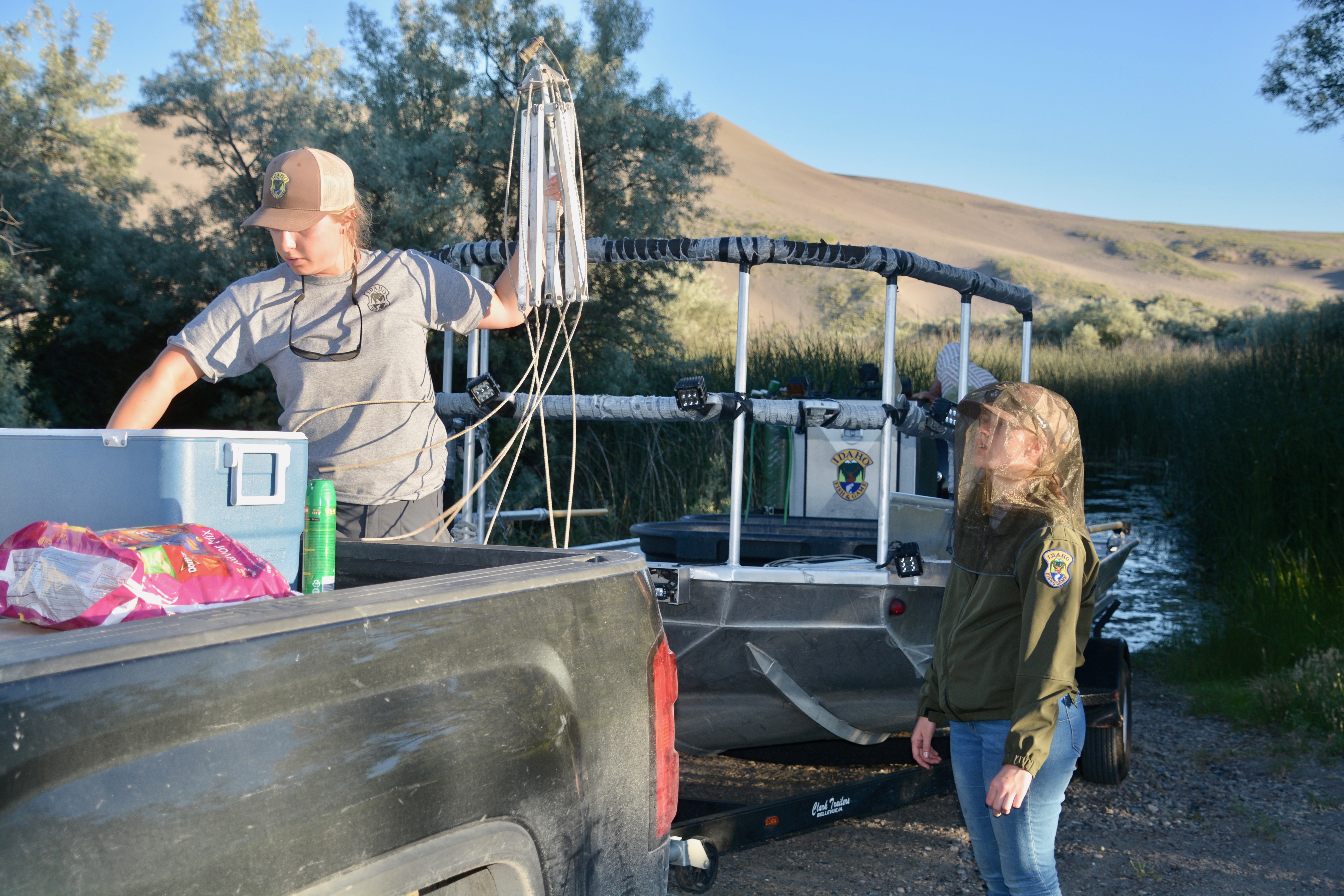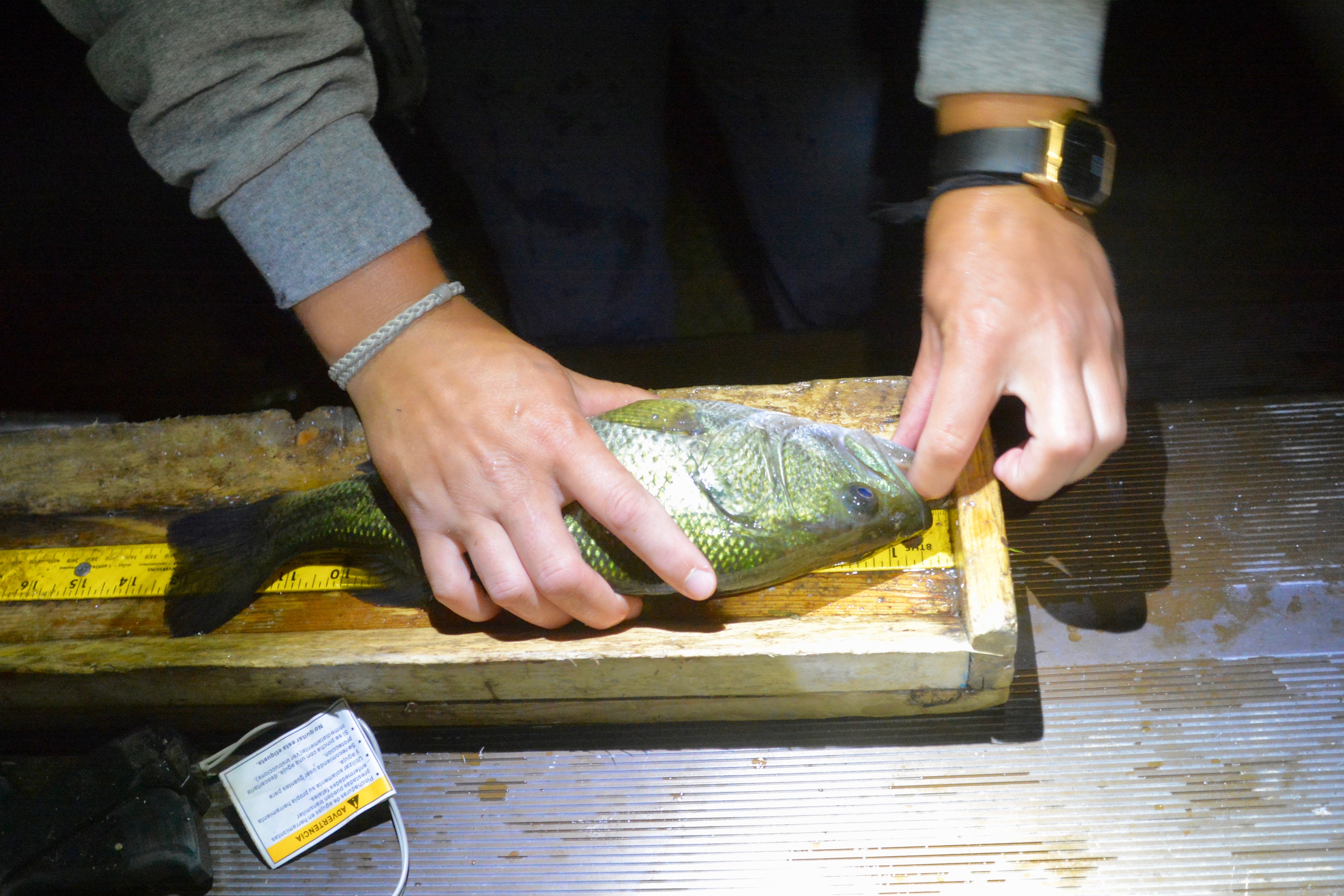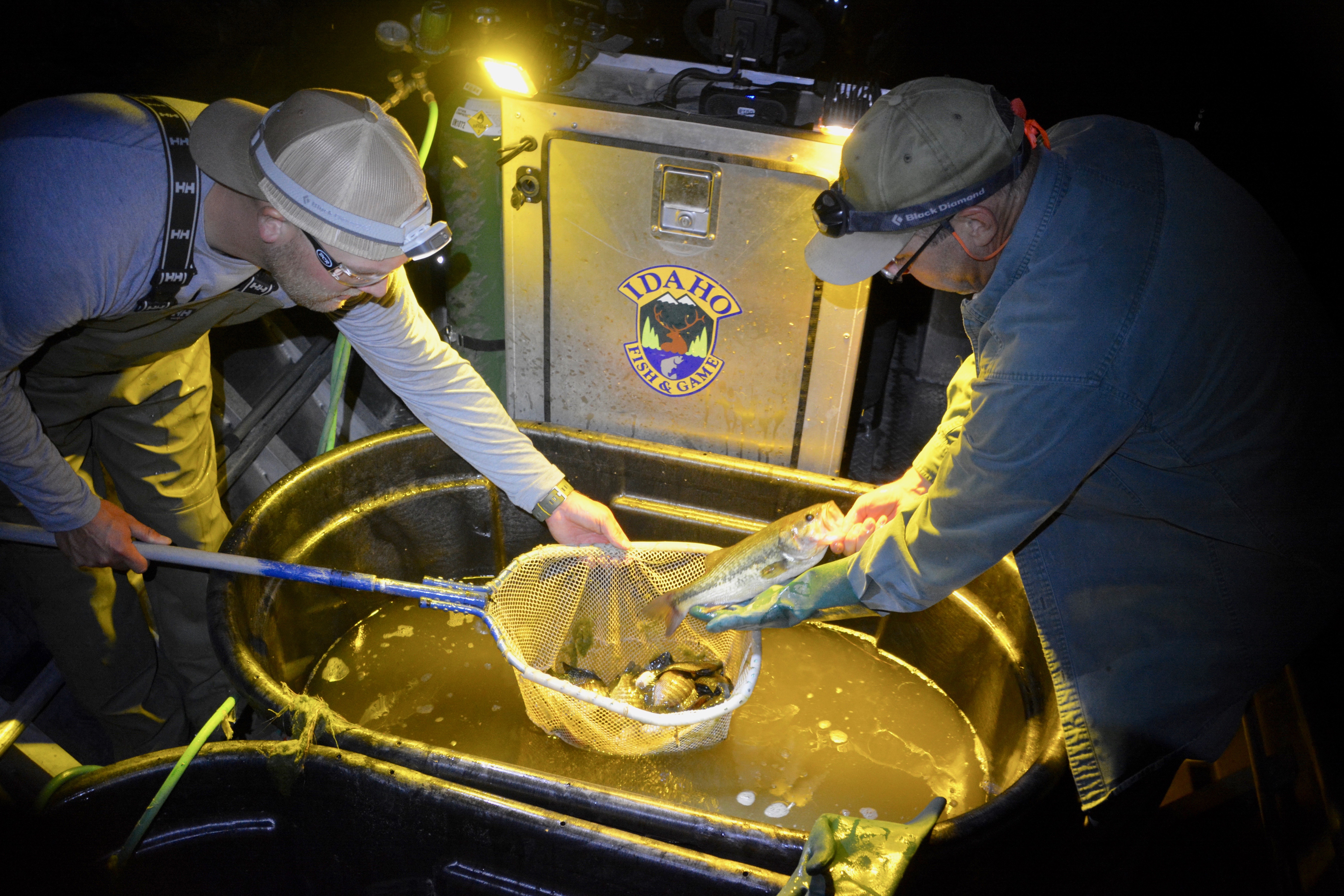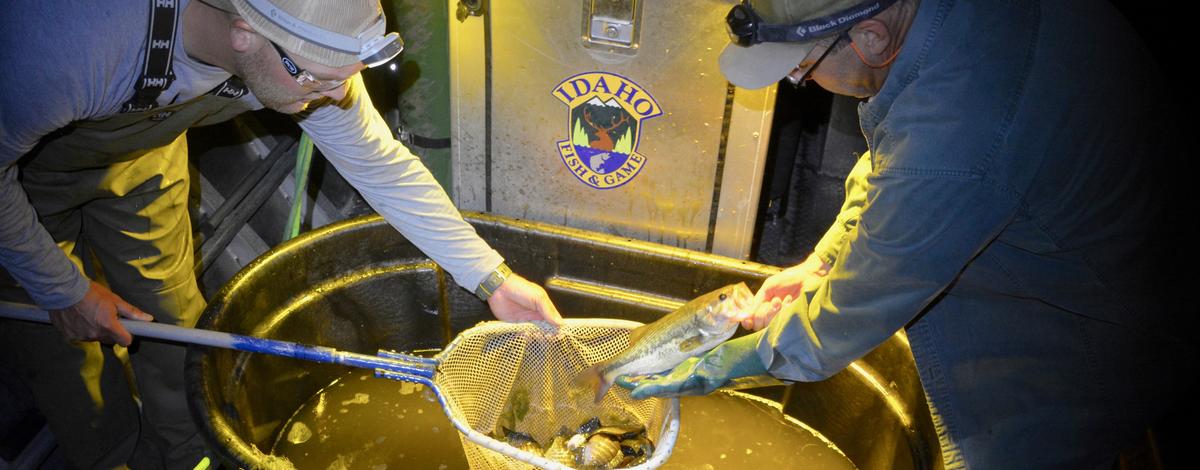Joe Thiessen, regional fisheries biologist for Idaho Fish and Game, couldn’t help but be excited as he loaded a boat with electrofishing gear and prepared to launch at the overgrown earthen ramp at Bruneau Sand Dunes Lake on a warm July evening. He was eager to see how the lake’s bluegill and bass populations were progressing since getting a fresh start in 2017.
He was also a little apprehensive.
“I really hope we don’t find any carp today,” Thiessen said, after the boat was in the water and he had begun setting up the anodes — the metal and wire assemblies that emit an electric current — on the bow.

When the electrofishing started, the boat made its way around the shoreline in 30-minute intervals. The current drew fish toward the anodes at the surface, where netters at the front of the boat hauled them in, deposited them in a live well, and went back to scooping. Every 30 minutes, the boat brought the fish back to a two-person crew on the shore, who documented the species, measured the fish, and in some cases, affixed tags to them before releasing them back into the pond.

When the survey was completed, and the last fish was released, the news was good: there were no carp observed, and the survey found lots of bluegill were growing well and reproducing, as well as a self-sustaining population of bass that appeared to be re-establishing itself.
What does this all mean? It means that Fish and Game’s restoration project at Bruneau Sand Dunes Lake to rid it of unwanted carp was a success.
How did we get here?
Just three years ago, Bruneau Sand Dunes Lake was infested with common carp, an invasive fish that bred prolifically and out-competed bass and bluegill populations. The lake, which is located inside Bruneau Dunes State Park, was a popular fishing spot known for its large bass and bluegill.
Fish and Game crews started the process of restoring the pond in Oct. 2016, applying a fish toxicant known as rotenone across the surface of the 100-acre pond to kill the unwanted carp. Unfortunately, the chemical is nonselective, so every other species of fish was also killed.
Fish and Game biologists then restocked the pond with 2,000 bluegill in 2017, and with 200 bass in 2018.
What does the future hold?
So far, it looks like the efforts to eliminate carp and restore the bluegill and bass populations here have been successful, and the pond is on a trajectory to return to its former reputation for abundant bluegill and trophy-potential for largemouths. Fishery managers will continue to monitor and manage the bluegill and bass populations in the pond with those goals in mind.
“It appears that the fishery has begun to stabilize, and we are seeing good growth in our bluegill,” Thiessen said. “Last year’s young of the year grew about 3 to 4 inches, which exceeds the averages reported by Midwest state agencies.”

Thiessen added that it appeared the bass population could be limited at the pond, and noted that there were no bass over 20 inches observed during the most recent survey. But there were a number of bass in the 14 to 18-inch range, which are large enough to make for a fun fight, even if anglers have to catch and release them until they reach harvestable sizes. Nonetheless, the future looks brighter for Dunes Lake and its warm water fishing opportunity.

